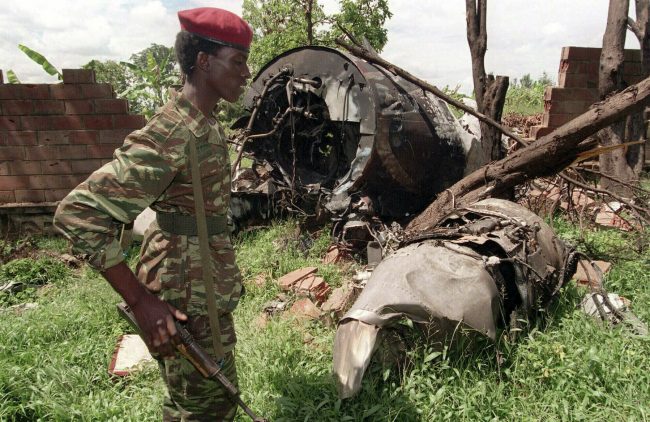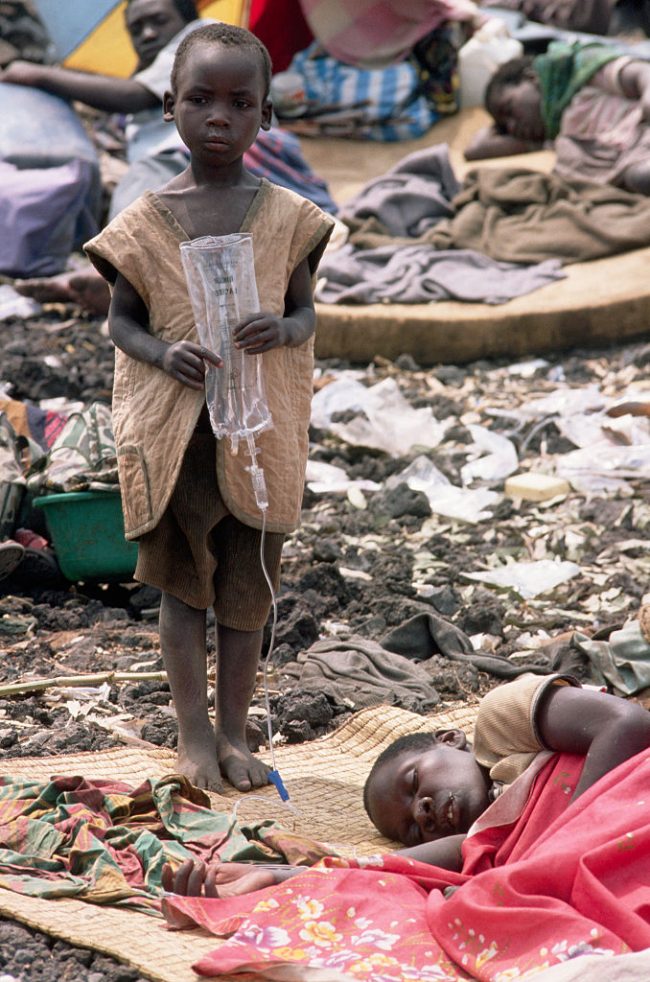Rwanda embarks on a week of commemoration activities and 100 days of national mourning on Sunday to mark the 25th anniversary of the genocide in which 800,000 people – one tenth of its population – were killed in 100 days of slaughter.

Here are some facts about one of the darkest chapters in human history:
* On the night of April 6, 1994, a plane carrying then Rwandan President Juvenal Habyarimana and his counterpart Cyprien Ntaryamira of Burundi – both Hutus – was shot down, killing everyone on board.

* Hutu extremists blamed the Rwandan Patriotic Front (RPF) – a rebel group made of exiled Tutsis – and launched a campaign of slaughter against Tutsis. The RPF claim the plane was shot down by Hutus to provide an excuse for the genocide.
READ MORE: 2,000 bodies discovered in Rwandan mass graves more than 20 years after genocide
* Over the next 100 days, more than 800,000 Tutsis and moderate Hutus were slaughtered by Hutu extremists, led by the Rwandan army and a militia known as the Interahamwe.
* They set up road blocks across the country and went from house to house killing men, women and children. They used radio broadcasts to incite hatred against Tutsis and called on ordinary Hutus to identify and kill all Tutsis.
* Hutu leaders handed out “kill lists” to militias familiar with local communities so they could locate and murder Tutsis. Neighbors killed neighbors and Hutu husbands even murdered their Tutsi wives out of fear for their own lives.
* Many Tutsis fled to churches to seek sanctuary, but priests and nuns in some cases informed militias of sheltering Tutsis who then killed them, either by burning down the churches or slaughtering them with machetes.

Get breaking National news

* As many as 10,000 people were killed per day. Seventy percent of the Tutsi population was wiped out, and over 10 percent of the total Rwandan population.
* Sexual violence was used as a weapon of war with up to 250,000 women and girls raped, resulting in thousands of births.
WATCH: Rwanda’s post-genocide guide keeps the memories alive

* Hutus also released AIDS patients from hospitals in order to form “rape squads” to infect Tutsi women. As a result, thousands of survivors and their children born from rape are infected with the HIV/AIDS virus.

* The genocide ended in July 1994 as the RPF, backed by Uganda’s army, seized more territory and took control of Rwanda.

* Fearing revenge attacks, about 2 million Hutus – both civilians and some of those involved in the genocide – fled to neighboring countries such as the Democratic Republic of Congo (DRC), Tanzania and Burundi.

* Human rights groups say RPF fighters killed thousands of Hutu civilians as they took power. The RPF denies this.

* The International Criminal Tribunal for Rwanda (ICTR) was established in Tanzania in November 1994 by the United Nations to prosecute those behind the genocide.

* Over 90 people were indicted and, after lengthy trials, dozens of senior officials in the former Rwandan regime were convicted of genocide, all of them Hutus. Rwanda also set up community courts to prosecute thousands of low level Rwasuspects.
- RCMP say Haitian migrants including 3-year-old, intercepted in Quebec near border
- Nigerians react after U.S. airstrikes targeting alleged Islamic State camp
- ‘The year that the shoe dropped’: Canada-U.S. relationship in 2025
- Indonesian rescuers search for a Spanish coach and 3 children after tour boat sinks








Comments